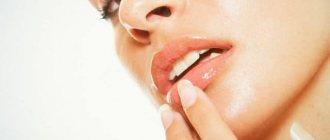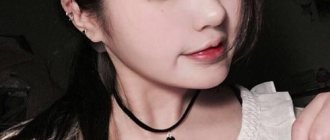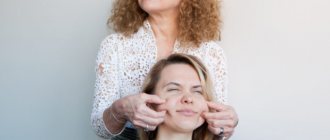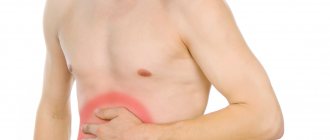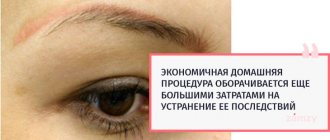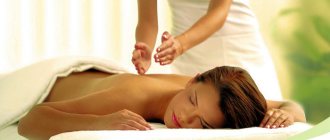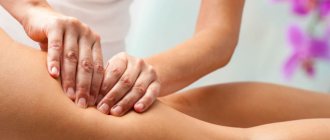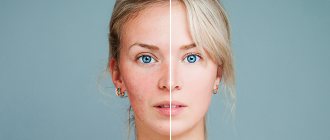Rosacea is one of the common dermatoses. It manifests itself as pink rashes, sometimes pustules, and vascular changes. Rosacea is a disease of polyetiological nature. It is most often observed in people aged 30–40 years, and reaches its maximum severity by 40–50 years. However, in the last decade it has often been diagnosed in children and adolescents due to the development of acne.
In the initial stages of rosacea, minor redness periodically occurs in the forehead, cheeks, nose and chest. It can be diagnosed visually by a doctor and is quite easy to treat. In moderate and severe forms, the disease is much more difficult to treat, so early diagnosis and timely therapy are important.
Rosacea Treatment Methods
Dermatocosmetologists have a large number of different methods of treating this disease at their disposal.
To obtain a lasting clinical result, our clinic’s specialists use a combination of several methods of therapy, including medicinal (drugs) and “local” (ointments and gels).
Modern non-drug methods for treating rosacea include cryotherapy with liquid nitrogen, photo- and laser destruction, and destruction of blood vessels using a high-intensity broadband light source IPL systems.
One of the promising modern methods of treating rosacea, which has shown high efficiency, is plasma therapy (the use of autologous plasma with a high platelet content).
Prevention of rosacea
People prone to rosacea should take care and protect their skin every day of the year.
A number of rules must be followed:
- In winter, before going outside, cover your face with a scarf or a scarf and apply a thick protective cream. It is better to choose creams containing zinc or titanium, without fragrances. In summer, use sunscreen.
- Avoid baths and saunas, that is, do not visit places with high humidity and temperature.
- Cosmetics and decorative cosmetics should not contain alcohol, acetone, citrus extracts, eucalyptus, that is, ingredients that can cause skin irritation.
- It is better for men not to use an electric razor, but to shave with disposable razors.
- You should exclude from your diet too hot foods and drinks, hot and spicy dishes, alcohol, citrus fruits, that is, all foods that cause the expansion of capillaries on the face.
There are no specially developed and traditional regimens for the treatment of rosacea. If the disease is diagnosed in the early stages, it can be treated fairly quickly.
Complicated forms of the disease are sometimes treated for several months. You shouldn’t put off treating rosacea and think that everything will go away on its own.
The disease will indeed recede, but at the same time rosacea, swollen skin in some places, and redness of the nose will remain on the face. It is better to consult a specialist in time and keep your skin beautiful and healthy.
Physiotherapeutic methods for treating rosacea
Cryotherapy or cryo massage
The essence of treating rosacea using cryotherapy is that the patient’s skin is exposed to liquid nitrogen, the temperature of which is -196 degrees. Due to this, when nitrogen comes into contact with the surface layers of the epidermis, a reflex narrowing of the capillaries occurs, which subsequently begin to expand in the same way. Such processes lead to a sharp increase in blood supply to the skin, a decrease in inflammatory processes and an increase in metabolism. It has also been proven that such cryo massage stimulates facial muscles and, as a result, the skin becomes elastic and the face takes on the correct shape. The recommended number of courses should be at least 20.
Electrophoresis
To carry out electrophoresis, use ascorbic acid, any antihistamine (anti-allergic) and aloe extract. To achieve a lasting cosmetic effect, it is necessary to carry out at least 30 procedures daily for one month.
Laser therapy
Laser therapy for rosacea is considered one of the most effective physiotherapeutic treatments. Its essence is that when a laser beam interacts with the manifestations of this disease (papules, pustules, erythema, etc.), a sharp heating of the skin occurs in a certain area. This leads to coagulation of these manifestations, sterilization, improvement of blood flow and stimulation of facial muscles. The laser effect also causes the rapid replacement of old or disease-damaged surface skin cells with new ones. It should be noted that excellent results are achieved both in the acute and remission stages. Cosmetologists recommend carrying out such procedures for at least 2 weeks.
Sobby massage
This type of massage is performed quite gently and painlessly. Its advantage is the improvement of drainage of the local lymphatic system and improvement of capillary blood flow on the facial skin. Massage according to Sobby is strictly prohibited for pustular rosacea.
IPL phototherapy
The essence of this method is to expose skin cells to an infrared ray in the wave range from 515 to 1200 nm, which comes into contact with chromophores, that is, substances that absorb light and are part of the structure of every cell in the body, as a result of which they begin to heat up to a certain temperature. It should be noted that the main chromophores include the skin pigment - melanin and the blood protein that carries oxygen - hemoglobin. This infrared beam, unlike a laser, penetrates inside without damaging the surface layers. The use of this method for rosacea provides long-term remission and renewal of the epidermis. IPL phototherapy is carried out over just a few minutes, but the number of sessions is determined individually.
Rosacea
Rosacea is a chronic, relapsing skin disease. Unfortunately, it is impossible to cure it, but you can control it and learn to live with it.
Rosacea is characterized by repeated episodes of flushing, dilation of small and superficial vessels of the facial skin. At first, it may only manifest itself as periodic redness of the skin, which in later stages becomes constant and intense and is accompanied by increased sensitivity, swelling, itching and, in some cases, the appearance of papules and pustules (depending on its type).
There are four subtypes of rosacea:
1. Erythematotelangiectatic
Among its symptoms are rosacea, the appearance of itching, heat and burning; the capillary network becomes more and more pronounced.
2. Papulopustular
It is characterized by inflammation, redness, pronounced vascular network, the presence of papules and pustules, hyperplasia of the sebaceous glands and, as a result, thickening of the skin. The skin is oily, but may feel dry and tight.
3. Rhinophyma
A severe form of rosacea is manifested by changes in soft tissues and thickening of the skin of the nose, less often the chin, and can spread to the neck and chest. Chronic swelling and inflammation lead to hyperplasia of the dermis and sebaceous glands, and then to fibrosis, the gold standard of treatment is laser surgery.
4. Ophthalmic rosacea (ocular form)
Blepharitis, conjunctivitis, inflammation of the eyelid, blurred vision, as well as a feeling of sand, pain or foreign body. Treatment is carried out by an ophthalmologist.
Possible causes of rosacea
- genetic predisposition;
- cathelicidin peptide. With rosacea, the skin produces more of the antimicrobial peptide cathelicidin, which protects it from infections. Its level in the affected skin is always significantly elevated;
- hormonal levels (high levels of estrogen);
- pathogenic microorganisms. Bacillus oleronius (inhabits the body of the Demodex mite) – stimulates inflammatory reactions in patients with papulopustular rosacea.
Numerous studies have shown improvement in rosacea symptoms after getting rid of Helicobacter pylori. However, making the connection is difficult.
What to do?
Rosacea cannot be cured. You can achieve stable long-term remission, but with the slightest indulgence in your lifestyle, rosacea will gradually win. Therapy for the disease is complex and depends on the form of the disease - the doctor prescribes medications for oral administration, special cosmetics, hardware procedures and diet. Together with the dermatologist, a gastroenterologist, gynecologist-endocrinologist, and, if necessary, a psychotherapist are involved in treatment.
Anti-stress activities
Normalize your sleep schedule, hang dark curtains in the bedroom, practice meditation, minimize unnecessary information and toxic people.
Nutrition
In a National Rosacea Society survey of more than 400 patients, 78% changed their diet because of rosacea. Of this group, 95% reported a subsequent reduction in outbreaks. The triggers were: hot coffee and tea, alcohol, including wine, spices, tomatoes, chocolate, citrus fruits and dairy products.
Home care
It should be aimed at restoring the epidermal barrier and improving the barrier function of the skin, correcting sebum secretion, reducing vascular reactivity, and restoring the skin microbiome. It is recommended to exclude the use of cosmetics with vitamin C, alcohol, retinol, acids (with the exception of mandelic, azelaic, and lactic acids - but use them strictly as prescribed by a doctor), peelings, abrasives, brushes and other gadgets that stimulate skin renewal.
Procedures (after or sometimes in parallel with treatment)
Avoid aggressive cosmetic procedures (physical and chemical peels, scrubs, dermabrasion, rubbing procedures, thermoactive masks, active massages and self-massage of the face).
Shown:
- lymphatic drainage massages;
- microcurrent therapy – normalizes metabolic processes;
- injections of platelet-rich plasma are the most effective for relieving inflammation. For the same purpose, a course of cryomassage is given;
- botulinum toxin injections using the mesobotox technique – stabilize the vascular network and reduce greasiness;
- laser therapy (Vbeam Candella) – coagulation of deep and small capillaries;
- phototherapy (BBL, IPL) – exposure to broadband light reduces the inflammatory process, coagulation of deep and small capillaries, including this method is an excellent supportive therapy;
- injections of biomimic peptides (Aquashine br) - help stabilize the functioning of blood vessels after the delight has gone;
- chemical peels (azelaic acid) of low concentration – gentle skin renewal, reduction of inflammation.
Personal triggers
For those with rosacea, you need to sit down and write down on paper what is making you feel worse. Start this as early as possible and try to keep a diary of observations for some time, noting what causes an exacerbation: what food, weather conditions, procedures, visiting a sauna. The results may be very unexpected.
The most common triggers are stress, ultraviolet radiation and...
Cosmetical tools
ZO Rozatrol Normalizing Serum Treatment for Red, Sensitized Skin
iS CLINICAL Pro-Heal Serum Advance+
ZO Daily Power Defense
SESDERMA RETI AGE Anti-Aging Cream
Medicalia MEDI-SOOTHE Gentle Cream
PHYTO-C SUPERHEAL® O-Live Serum
SUPERHEAL® O-Live Lotion
PHYTO-C SUPERHEAL® O-Live Gel
TEBISKIN UV-Sooth SPF 50
SESDERMA AZELAC Lotion
PHYTO-C SUPERHEAL® O-Live Cream
TEBISKIN Sooth
PEVONIA RS2 Care Cream
Source – my article for prime .
| *Image source |
Hardware treatment methods
Ultrasonic skin cleansing for rosacea can provide long-term remission without causing any complications from the internal organs. When an infection occurs, a highly effective technique is ultrasonic cavitation. Mesotherapy and ozone therapy are also considered the main methods of combating rosacea. The essence of this treatment is that an ozone-oxygen mixture is introduced into the skin using injections, which can be supplemented with various vitamins and antioxidants. Ozone therapy is carried out at least 3 times a week for several weeks. It is important to note that ozone and mesotherapy are contraindicated in acute inflammation and pustular formrosacea.
Folk remedies for oral administration in the treatment of rosacea
Rosacea cannot be treated externally only. Many doctors consider rosacea not only as an external skin disease, but as a problem of the entire body. Proper nutrition, including in your menu foods that can reduce the manifestations of rosacea, vitamins and dietary supplements should become the norm.
Linseed oil
Flaxseed oil contains essential fatty acids that can reduce inflammation. Take 1 teaspoon of oil 3 times a day. Flaxseed oil is available in capsules. This is for those who cannot drink oil.
Cat claw
This dietary supplement has powerful immunostimulating properties, removes toxins and waste from the body, improves the condition of the gastrointestinal tract, reducing sensitivity to food and restoring intestinal microflora. Cat's claw can help reduce flare-ups caused by food or medications.
Take 1 capsule of 500 mg 3 times a day to get the desired result. Do not use if pregnant, breastfeeding or undergoing organ transplantation.
Red clover
Red clover is considered one of the safe and effective treatments for rosacea. This herb relieves redness and reduces skin irritation. Drink red clover tea twice a day.
Vitamins or dietary supplements with zinc should be taken 25 mg 2 times a day with meals. This element helps maintain healthy skin and hair. It also helps fight rosacea.
Vitamin B complex
B vitamins, especially vitamin B2, are essential for healthy skin. Taking a vitamin B complex may help reduce flare-ups of rosacea. Take 100 mg of B complex vitamins daily.
Drug treatment for rosacea
Treatment of rosacea with antibacterial drugs For these purposes, tetracycline drugs, macrolides (erythromycin and azithromycin) and inidazoles (metronidazole) are used. It should be noted that all antibacterial drugs are used orally and for a long time (up to about 2 months). Treatment with antihistamines Among the main antihistamines, their representatives of the 3rd and 4th generations are widely used. Such medicines can be used both in tablet form and in the form of ointments. Antihistamines for rosacea are often used in combination with hardware and other treatment methods. Additionally, during periods of exacerbations, steroidal anti-inflammatory drugs are prescribed along the way.
Options for preparing masks for rosacea
We think it is clear to everyone that homemade masks for rosacea will only help alleviate the symptoms of the disease, but will not cure it. Complex treatment, with an individual approach, can only be prescribed by a specialized dermatologist.
In the meantime, there is no opportunity to visit a doctor, or simply use the mixtures described as an additional traditional therapy and, perhaps, one of the recipes will turn out to be a miracle cure for you personally.
To reduce redness in the cheeks, nose or forehead, it is recommended to use masks made from oatmeal and cucumber (cabbage juice).
The composition is made very simply: using a juicer (or any other method), squeeze about a quarter glass of juice from fresh cucumbers or from white cabbage leaves. Dilute 2 tbsp with this juice. l. oatmeal (grind the oatmeal in a coffee grinder) so that a sour cream-like paste (not very thick) is formed during the stirring process. It is this paste that needs to be applied to the face in a thick layer and kept for 15 to 20 minutes.
The product is washed off with warm water without soap or any cleansing foam. You can use it at least every day.
The following folk mask for rosacea will also help calm the manifestations of the disease:
Brew medium-strength black tea. At the same time, cook a small amount of oatmeal in water (without salt and other spices) or just pour a couple of tbsp. l. oatmeal with boiling water, cover and leave for 10 minutes.
The porridge for this recipe should be thick, so do not overdo it with the amount of water.
Now add 3 tbsp to the cooked porridge and cooled until warm. l. liquid tea leaves (also warm, never hot). Stir, apply to face for 15-20 minutes, then rinse with just water.
Suitable for daily use.
This universal face mask for rosacea can also be used for many other skin diseases:
You will need to purchase sulfur ointment, which is sold at any pharmacy and costs a penny.
Approximately 1 tsp. sulfur ointment should be mixed with 3-4 tbsp. l. juice squeezed from aloe leaves.
True, aloe juice has its own difficulties; before squeezing it, the leaves cut from the plant should be kept in the refrigerator for 14 days. Read more about this and, in particular, about the use of this medicinal plant in skin care on the page – The benefits of aloe in cosmetology.
So, after you have prepared the mixture, lubricate the areas of the skin affected by rosacea with it and, in fact, if you do not need to leave the house, you can not wash off the composition (or leave it for 20-30 minutes, then rinse).
We also recommend herbs and other folk remedies for facial rosacea.
Masks for rosacea that improve skin condition Using these mixtures, you can make visible spider veins on the face less noticeable, reduce irritation and itching.
What can you use to prepare therapeutic masks for demodicosis of the face? Blue clay powder mixed with other ingredients, Trichopolum tablets, olive or sunflower oil with garlic.
Anti-inflammatory and other masks with a healing effect against psoriasis. Compositions based on infusions of chamomile and calendula, crushed aloe leaves, natural oils and turmeric.
What homemade masks are effective for dermatitis For seborrheic, atopic and other types of dermatitis, raw potatoes, mustard, kaolin, and birch tar are used externally.
What cosmetic procedures are prohibited for rosacea? – ACRIOL PRO
Rosacea is a chronic inflammatory disease of the face, the main symptoms of which are redness, the presence of spider veins, papules and pustules.
The disease is more common in women 30-50 years old, who have a genetic predisposition to transient redness of the facial skin; redness is rare in the décolleté area and neck. Most often, the appearance of rosacea symptoms is associated with the following factors:
- unfavorable weather conditions (large temperature fluctuations, wind, frost);
- high temperature (hot baths, sauna);
- stomach problems (for example, high acidity), H.pilory and impaired intestinal motility;
- food consumed (hot drinks, alcohol, spices);
- UV radiation (too long frequent tanning, especially in a solarium);
- nervousness, stress.
Endocrine disorders also contribute to the development of the disease. It more often affects people with a tendency to allergies and those suffering from hypertension. Rosacea usually affects the middle part of the face - forehead, nose, cheeks, chin. The severe form is aggravated by fibrosis and lymphedema.
Rosacea can also be caused by:
- inappropriate cosmetics (containing alcohol, acetone, menthol);
- Using ointments or creams containing steroids for too long.
Features of cosmetic care for rosacea
Before starting therapy, factors that provoke rosacea should be identified and, if possible, avoided. They may be unique for each individual client. General rule: it is important to avoid manipulations that cause skin irritation or increased microcirculation, leading to the appearance of erythema.
Mesotherapy, biorevitalization, laser rejuvenation, ozone therapy should be carried out with extreme caution. These procedures can be resorted to only when the disease is in remission, in cold seasons when there is no active sun.
Physical and chemical peels, rubbing procedures, dermabrasion, and the application of thermoactive masks are not recommended for rosacea.
You should also avoid saunas and solarium procedures with a warming effect. Exposure to heat leads to expansion of the capillaries, resulting in severe and persistent facial hyperemia.
The esthetician should not use granules or peels containing ferulic acid. The skin can only be cleansed with enzyme peels (for example, azelaine), which are applied for a few minutes and then washed off with warm water.
Cleaning by hand or with a vaporizer is not recommended due to vasodilation, blood flow, and skin redness.
You should refrain from using ice cubes, as well as cryomassage (local treatment of papules and pustules is allowed, but not the entire face).
It is necessary to pay attention to the composition of cosmetics. The drug should not contain chemical components (parabens, silicones, SLS, emulsifiers, artificial colors, flavors), as well as alcohol.
They create a favorable environment for the reproduction of demodex mites, disrupt the skin barrier, dehydrate the skin, and shift the pH level to the alkaline side.
The presence of active ingredients of natural origin in the composition is allowed:
- vitamin C;
- vitamin K;
- vitamin B3;
- vitamin PP;
- green tea extract;
- chamomile extract.
These ingredients have a strengthening effect on fragile capillaries, protecting the skin from harmful environmental influences.
Rosacea is worsened by sun exposure and therefore requires more careful care with products for sensitive and allergy-prone skin. Hypoallergenic cosmetics must have a high SPF filter.
Application of anesthetic Acriol Pro
When performing painful cosmetic procedures, the doctor should offer the patient the use of an anesthetic. In cosmetology, injection and application anesthesia is used.
Using the first is not always advisable, since it can modify the clinical picture, which prevents the specialist from working.
Topical anesthetics are easy to use; they are applied to the skin without causing discomfort to the client.
Acriol Pro cream is a topical anesthetic. It contains two anesthetics - 2.5% lidocaine and 2.5% prilocaine. It has been registered as a medicinal product1. Its production complies with international quality standards GMP2.
Source: https://www.acriol.pro/stati/kakie-kosmetologicheskie-protsedury-zapreshheno-delat-pri-rozatsea/
